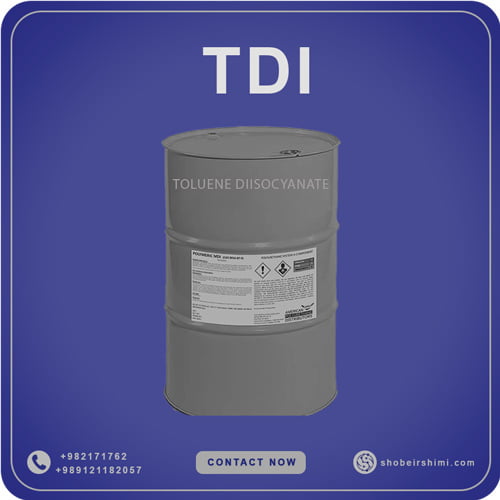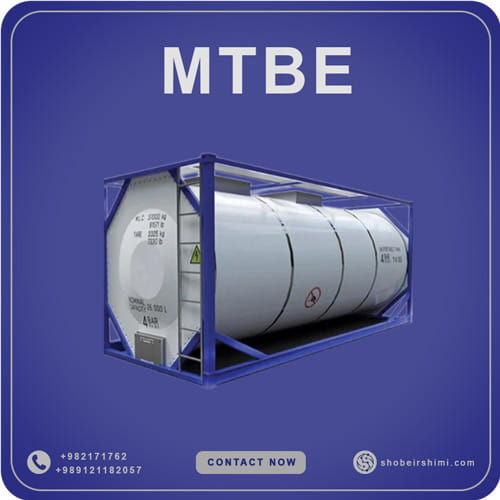- GRADE: TOLUENE DIISOCYANATE (TDI)
- Appearance: Clear liquid
- Purity, %wt: Min. 99.5
- Hydrolysable chlorine, ppm by wt: Max. 120
- Total chlorine, ppm by wt: Max. 500
- Nitro Isocyanate compounds, ppm: Max.30
- PRODUCER: Karun Petrochemical Co
- Packing details: In 220 lit (250 kg Net.)
- For purchases and inquiries, contact us on WhatsApp.
Toluene Diisocyanate Prices
Description
Toluene Diisocyanate (TDI): A Complete Guide to Uses, Prices, and Safety
Toluene diisocyanate, commonly known by its abbreviation TDI, is a vital aromatic diisocyanate and a cornerstone of the polyurethane industry. This highly reactive TDI chemical is primarily used to produce flexible polyurethane foams, which are found in countless everyday products, from furniture and bedding to car seats and insulation. However, its industrial importance is matched by its significant health hazards, requiring strict safety protocols in its handling and application.
This guide provides a comprehensive overview of toluene diisocyanate (TDI), covering everything from its chemical properties and production to its market dynamics, including the factors that influence the toluene diisocyanate price.
What is TDI Chemical? Structure and Properties
The TDI chemical full form is Toluene Diisocyanate. It is an organic compound with the chemical formula C₉H₆N₂O₂. Commercially, TDI toluene diisocyanate is not a single compound but a mixture of two isomers: 2,4-toluene diisocyanate and 2,6-toluene diisocyanate. The most common mixture is an 80:20 ratio of the 2,4- and 2,6-isomers, respectively. This specific blend is crucial for controlling the reaction rates during polyurethane production.
The two primary TDI diisocyanate isomers are:
- 2,4-TDI (CAS: 584-84-9)
- 2,6-TDI (CAS: 91-08-7)
The reactivity of the isocyanate groups (–N=C=O) is the key to its function, allowing it to act as a building block for the TDI polymer known as polyurethane. The core of the molecule is a toluene ring (a benzene ring with a methyl group). The isomers differ in the placement of the two isocyanate groups on this ring.
Key Physical and Chemical Properties
- Molecular Weight: The toluene diisocyanate molecular weight is approximately 174.16 g/mol.
- Appearance: At room temperature, pure TDI is a colorless to pale-yellow liquid.
- Odor: It has a sharp, pungent, and irritating odor.
- Density: The TDI density is about 1.22 g/cm³.
- NCO Content: The TDI NCO content, or the weight percentage of isocyanate groups, is a critical quality parameter, typically around 48.3%. This value is essential for calculating the correct mix ratios with polyols.
TDI Technical Specifications
| Property | Specification | Analytical Method |
|---|---|---|
| Appearance @ 30 °C | Clear liquid | Visual |
| Purity, %wt. | Min. 99.5 | GC |
| 2,4-TDI Content, %wt. | 80.0 ± 1.0 | ASTM D4660.00 |
| 2,6-TDI Content, %wt. | 20.0 ± 1.0 | ASTM D4660.00 |
| Total Acidity, ppm by wt. | Max. 40 | ASTM D5629.05 |
| Hydrolysable chlorine, ppm by wt. | Max. 120 | ASTM D4663.98 |
| Total chlorine, ppm by wt. | Max. 500 | ASTM D4661.03 |
| Colour (APHA) | Max.25 | ASTM D4877.04 |
| Sp.gr @ 25 °C | 1.22 ± 0.02 | ASTM D4659.03 |
| Nitro Isocyanate compounds, ppm | Max.30 | H900.5800 |
How is TDI Produced?
The synthesis of TDI is a multi-step industrial process that has a direct impact on the toluene diisocyanate production cost. The process begins with toluene, a common petrochemical.
- Nitration: Toluene is treated with nitric acid to produce dinitrotoluene (DNT).
- Hydrogenation: The DNT is then reduced with hydrogen to form toluenediamine (TDA). The toluenediamine production cost is a significant factor in the overall price of TDI.
- Phosgenation: Finally, the TDA is treated with phosgene to produce the final chemical TDI and hydrochloric acid (HCl) as a byproduct.
This complex and hazardous process requires substantial capital investment and stringent safety controls, influencing the final toluene diisocyanate cost.
Key Applications and Uses of TDI Chemical
The primary use of TDI isocyanate is in the production of polyurethanes. Its main applications include:
- Flexible Polyurethane Foam: This is the largest market for TDI, accounting for the vast majority of its consumption. These soft, durable foams are used in furniture cushions, mattresses, automotive seating, and carpet underlay.
- Coatings, Adhesives, Sealants, and Elastomers (CASE): TDI is used to formulate high-performance polyurethane coatings for automotive refinishing, wood finishes, and corrosion protection. It’s also a key ingredient in flexible adhesives and durable elastomers.
- Rigid Foams & Other Applications: While less common than for flexible foams, TDI is sometimes used in specialty rigid foam applications and as a chemical intermediate.



Health Hazards and Safety Precautions
TDI is a hazardous chemical and is classified as very toxic. Understanding its health risks is critical for anyone working with the material. The tdis full form in many safety documents reflects its isomers’ presence.
- Respiratory Sensitization: The most significant hazard is respiratory sensitization. Inhaling TDI vapor can cause an asthma-like reaction, with symptoms including coughing, wheezing, and shortness of breath. Once a person is sensitized, even minimal exposure can trigger a severe asthmatic attack.
- Eye and Skin Irritation: Direct contact can cause severe irritation to the skin and eyes.
- Carcinogenicity: The International Agency for Research on Cancer (IARC) classifies TDI as “possibly carcinogenic to humans” (Group 2B).
- TDI in Medical Terms: Occupational asthma caused by isocyanates like TDI is a recognized medical condition that can lead to permanent lung damage.
Due to these risks, strict safety measures are mandatory:
- Personal Protective Equipment (PPE): Workers must use respirators, chemical-resistant gloves, and eye protection.
- Ventilation: Work areas must have adequate ventilation to keep airborne concentrations below established exposure limits (e.g., OSHA PEL).
- Monitoring: Regular air quality monitoring is essential.
Understanding Toluene Diisocyanate Prices
The TDI price is notoriously volatile and subject to global market forces. Several factors influence the tdi chemical price:
- Raw Material Costs: The toluene diisocyanate cost of production is heavily tied to the price of crude oil and its derivatives, particularly toluene. Fluctuations in these markets directly impact the tdi price trend.
- Supply and Demand: Plant shutdowns (both planned and unplanned), geopolitical events, and changes in demand from key industries (automotive, furniture) can cause significant price swings.
- TDI and Polyol Prices: The price of TDI is often discussed alongside polyol prices, as the two are used together. Their relative costs affect the final price of polyurethane foam.
- Logistics: The TDI HS code (Harmonized System code, typically 2929.10) is used for international shipping, and transportation costs can add to the final price.
You can often find the tdi price today or track trends on industry platforms like tdi price on echemi and other chemical market analysis websites.
Conclusion
Toluene diisocyanate (TDI) is an indispensable chemical tdi for the modern polyurethane industry, enabling the production of a vast array of flexible foams and other materials. Its unique reactive properties make it highly effective, but this reactivity also makes it hazardous, demanding the highest standards of safety and handling. For businesses that rely on this chemical, understanding the complex factors that drive toluene diisocyanate prices—from raw material costs to global supply chains—is just as critical as understanding its technical application.








Reviews
There are no reviews yet.